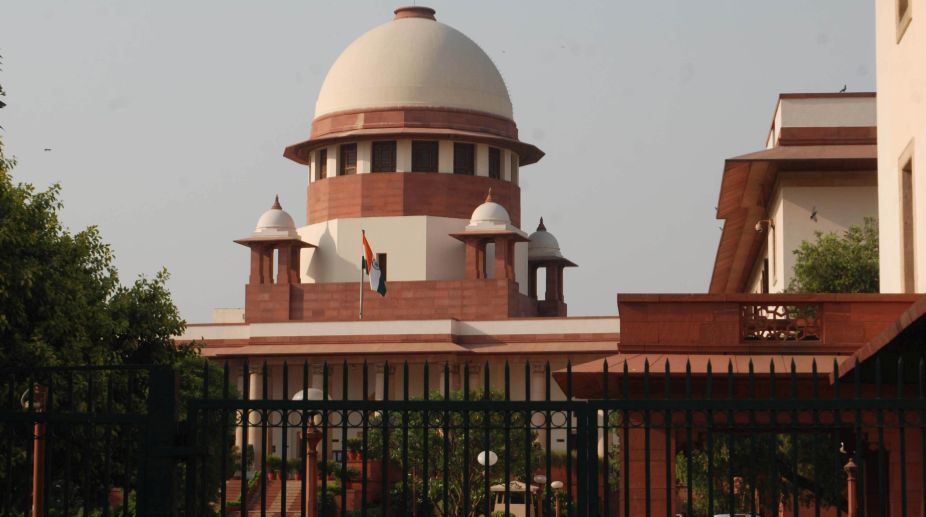The Constitution of India established the “Supreme Court” under Article 124. It is the apex Court of the land possessed with the power of judicial review of State action, the final interpreter of laws made by Parliament and the protector and guardian of rights bestowed to citizens under the Constitution.
It has always been a “problem-solver”, be they legal, political or social. The Constitution makers vested the Supreme Court with an extraordinary power in Article 142 whereby it can pass any Order to do complete justice in any cause or matter before it. Going down memory lane, Parliament had sought to arrogate to itself an absolute power to amend the Constitution of India under Article 368.
This was challenged before the Supreme Court in the case of Kesavananda BharatiVs. State of Kerala (1973) 4 SCC 225. The Supreme Court by a razor thin majority of 7:6 Judges held that Parliament had no power to alter the “basic structure” of the Constitution.
The Supreme Court had to face an onslaught from the Executive of the day for protecting the Constitution. The then Chief Justice of India S.M. Sikri, who headed those in the majority, was to retire the following day. The government disregarded the seniority of three judges who had been part of the majority — Justices J.M. Shelat, K.S. Hegde and A.N. Grover — for the appointment of the next CJI, and appointed Justice A.N. Ray instead.
In June 1975 the Allahabad High Court held Prime Minister Indira Gandhi guilty of two corrupt electoral practices under the Representation of the People Act and disqualified her from contesting elections for six years. The appeal, Indira Nehru Gandhi Vs. Raj Narain (1975) 2 SCC 159, was listed during the summer vacation.
The legendary Nani Palkhivala made a valiant attempt before Justice Krishna Iyer for a complete stay of the judgment. Justice Krishna Iyer granted a conditional stay and allowed Indira Gandhi to attend Parliament without voting rights.
The very next day, Emergency was declared by the Government. In the course of hearing Indira Gandhi’s appeal, the Chief Justice constituted a 13 Judge Bench to reconsider Kesavananda Bharati case (supra). However, the Bar rose to the occasion and Nani Palkhiwala after having returned the brief of Indira Gandhi, stoutly argued against the review of the Kesavananda judgment so much so that the CJI had to dissolve the Bench.
In ADM Jabalpur vs Shivkant Shukla (1976) 2 SCC 521 a Constitution Bench by a 4:1 majority sadly justified the detention orders passed by the Executive without the authority of law. The lone dissenter, Justice H.R. Khanna, was superseded and Justice M.H. Beg was appointed as the next CJI. Justice Khanna deservedly occupies a special place in our hearts for his courageous dissent during the dark days of the emergency.
It is praiseworthy that the Shukla judgment has been criticised in the “Right to privacy” judgment by Justice D.Y. Chandrachud, 42 years later, despite the coincidence that his father Justice Y.V. Chandrachud was a party to the judgment. Now lets’ come back to the present day. The Bench and the Bar are equal participants in our system of justice dispensation. Mutual respect and mutual trust are extremely important for the institution to function. It is important for both the stakeholders to ensure that the majesty and the rule of law are not undermined.
Unfortunately, this time the attack on the Institution is not from any outsider but from within. Of late, there has been a growing trend of “jumping the gun” or “putting the cart before the horse”. The moral keepers of our institution, ignoring the salutary principles of criminal jurisprudence, want a CBI probe or an SIT headed by a retired CJI, to ensure probity in administration of justice even in cases where the criminal law has just been set in motion. For heaven’s sake let some credible evidence come out of the investigation. Let the investigative agency do its job.
When the Supreme Court delivered the landmark judgment in Vineet Narain Vs. Union of India (1998) 1 SCC 226 espousing probity in administration, this would never have been its intention. In the last couple of days, the Supreme Court witnessed high voltage drama involving the Bench and the Bar. Allegations flew thick and fast with the moral brigade claiming highest morals and thus placing themselves as “holier than thou”. Strategic mentionings were made for listing of matters and constitution of Benches.
Finally, a Constitution Bench, reaffirming the judgment of the Supreme Court in State of Rajasthan Vs. Prakash Chand and Others (1998) 1 SCC 1 held that the Chief Justice of India is the master of the roster and he alone has the prerogative to constitute benches of the Court and allocate cases to the benches so constituted. What is appalling is the manner in which aspersions are being cast. Mutual respect has flown out of the window.
The CJI is the father of the Institution and if unsubstantiated, scurrilous allegations are made against him, it undermines the majesty of the entire Institution. The fact that no favourable orders were passed in favour of the Medical College in question is conveniently suppressed as this fact would not sell. The tragedy is that a judge who ensures that every litigant gets natural justice is deprived of this right himself.
The time has come for the Bench and Bar to introspect as a common man has the highest faith in the institution called the judiciary. He has nowhere else to go to vindicate his legitimate rights. It is high time that everyone gets into a huddle and moves towards a new dawn. “The citadel indeed falls never but from within”-Fali Sam Nariman.
(The writer is an Advocate, Supreme Court of India)











